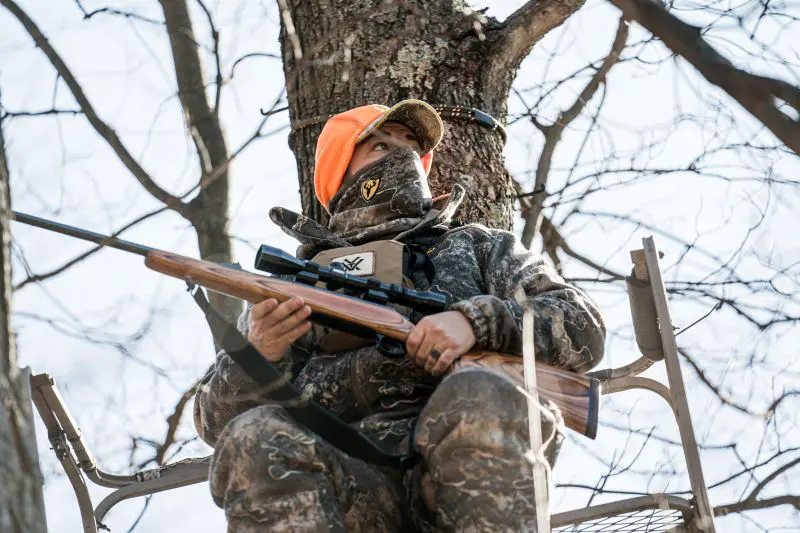For generations, deer hunters have followed the rules of dawn and dusk. Get to the stand before sunrise, the old timers would say, and don’t bother staying too long after the morning rush ends. Often, the rumble in your stomach and the chill that runs up your spine after sitting in the cold woods all morning is enough to make any hunter call it quits. While that advice has helped fill many freezers, many of today’s most successful rut hunters are rethinking their approach, staying in the stand long after most others have climbed down in the morning.
The reason for this new line of thinking is that bucks are on the move well into the late morning and even into the midday hours during the rut. What many hunters once considered “dead time” now proves to be some of the most productive hours of November. I learned this lesson during the 1998 firearms season in Missouri, while hunting alongside my father. After we went back home and had a late breakfast, we wasted no time getting back to our spots for the rest of the day.
As the warm midday sun helped digest my food and warm my body, my eyes grew heavy. I dozed on and off until my father, who was sitting next to me at the time, whispered loudly, “There’s a buck!” As I leaned up and opened my eyes, a mature southern Missouri buck was cruising his way down the hillside, coming in our direction. My dad got his gun up and gently squeezed the trigger. The buck dropped in his tracks. Typically, we would’ve headed home or back to camp, grabbed a nap, or just killed some time before going out for the evening hunt. But that day proved one thing: when the rut is in full swing, you never know when a trophy buck might show up right in front of your stand.

The Science Behind Midday Deer Movement
When there is a hot doe or when a doe enters estrus, the woods become chaotic. Bucks no longer follow their usual dawn and dusk feeding patterns. Instead, they focus entirely on one goal: finding the next receptive doe. Studies by state wildlife agencies and GPS collar data from mature bucks show that during the rut, bucks can be active at any hour of the day. In fact, many seasoned hunters report witnessing breeding and buck chasing between 9 a.m. and 2 p.m.
This shift is basic biology. Once a hot doe is located, a buck will stay close by, often bedding down nearby or trailing her every move until she is ready to breed. When she finally is, it doesn’t matter what the clock says; he’ll be there. And if that doe gives him the slip, he’ll immediately start searching for another, covering miles of ground in broad daylight.
Late Mornings Offer Less Pressure
By 10:00 a.m., most hunters have long since climbed down and headed to the truck. The woods grow quiet, human scent fades, and deer feel more at ease. This reduction in hunting pressure is a significant factor in why many hunters say that mature bucks move during the late morning.
In heavily hunted areas, especially on public land or small properties, bucks quickly learn to avoid movement during the early hours when hunter activity is highest. Between 10 a.m. and noon, however, the odds shift back in the hunter’s favor.
Veteran hunters who consistently tag mature bucks often share one trait: patience. They sit longer than everyone else. Many credit their biggest deer to those “bonus hours” when the woods feel empty. You may feel tired from sitting in your blind, stand, or tree saddle, but this is when a lovestruck buck often makes a mistake of cruising past, giving you the chance for a shot.
Ideal Late Morning Setups
When targeting late morning rut activity, focus on pinch points, funnels, or terrain features connecting known doe bedding areas. These are the natural highways bucks use to check for hot does. Creek crossings, inside corners of fields, or narrow strips of timber between thickets are all great ambush spots.
Tree stands or saddles with all day comfort are essential if you plan to wait out the action. Quality hunting gear, such as the Blocker Outdoors Shield Wooltex Pro Jacket and Pants, helps hunters stay warm and dry during those extended sits. On colder mornings, heated apparel like theShield Heated Vest can make the difference between climbing down early or sticking it out until that midday cruiser shows himself.

The All Day Sit Mindset
Committing to a full day sit demands mental toughness. It’s easy to become restless as activity diminishes after sunrise. But remembering that every minute could lead to the buck of a lifetime helps keep the focus. Pack snacks and water, and dress in layers to stay comfortable so you’re not tempted to leave your stand too early.
Trail camera intel can also boost your confidence. Cellular cameras often capture big bucks moving around late in the morning, proving that the deer you thought were nocturnal are just following their rut driven schedule.
The idea that deer only move at dawn and dusk is one of the biggest myths in deer hunting. During the rut, the woods come alive all day long, and late morning is one of the most overlooked windows for mature buck movement. This November, fight the urge to pack it in early. Stick it out, and remember why you’re out there in the first place. When most hunters have already called it a day, your shot at a buck might be slipping through the timber right toward you, turning all that patience into a moment that makes your whole season.

